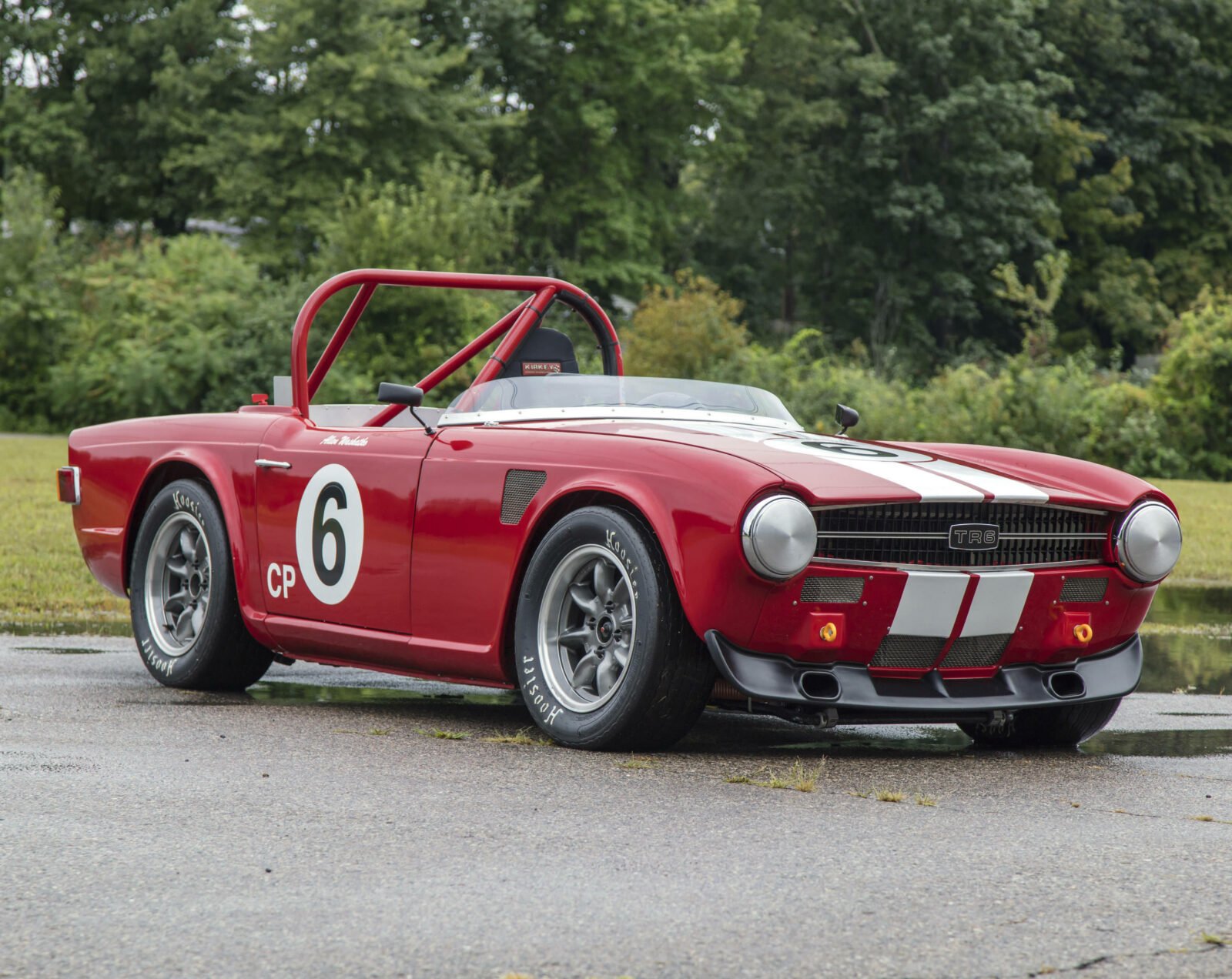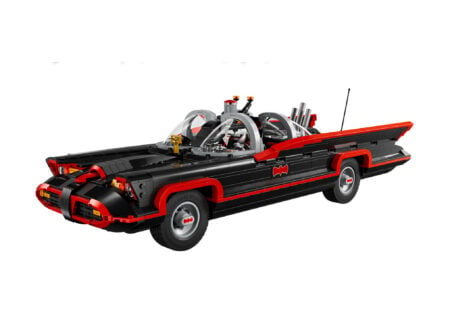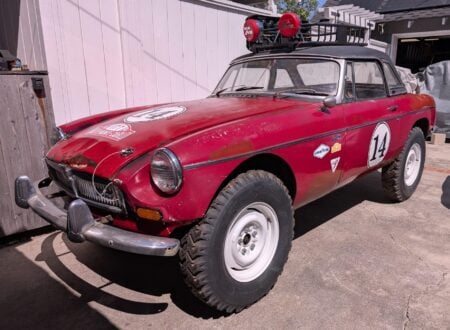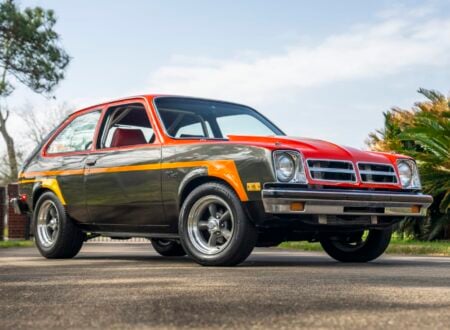This fastidiously prepared Triumph TR6 race car was built by the experienced team at KTR European Motorsports in Ayer, Massachusetts. It’s only seen limited use since it was completed, and it’s now coming up for sale.
The Triumph TR6 has been called the “E-Type for the masses” and it’s not hard to see why, much like its Jaguar rival it’s a British sports car powered by an inline-six, it’s got independent front and rear suspension, sharp handling, and a racing pedigree.
Fast Facts – A Triumph TR6 Race Car
- Introduced in 1969, the Triumph TR6 was a part of Triumph’s TR series, which began in 1953 with the release of the TR2 at the Geneva Motor Show. The TR series would include the TR2, TR3, TR4, TR4A, TR5, TR250, TR6, TR7, and TR8, ceasing in 1981.
- The TR6’s design was credited to the German firm Karmann. While retaining certain traditional British sports car elements it introduced squared-off front and rear ends, setting it apart from its predecessors.
- The European version of the TR6 was powered by a 2.5 liter straight-six with 150 bhp, boasting Lucas mechanical fuel injection. For the US market, a carbureted, lower compression ratio version was developed to meet more stringent emission regulations, albeit with reduced power.
- A key feature of the TR6 was its independent four wheel suspension, which Triumph had been perfecting since the TR4A. This suspension arrangement was advanced for the time and it gave the TR6 superior handling to many of its rivals.
- The car you see here is a completely rebuilt Triumph TR6 race car that was completed by KTR European Motorsports in Ayer, Massachusetts. It now produces 170 bhp at 4,900 rpm and it’s due to be offered by Bonhams with a price guide starting at $20,000 USD.
The Triumph TR6: A History Speedrun
The TR6’s lineage can be traced back to the 1950s when Triumph first launched the TR series. Beginning with the TR2, Triumph established a reputation for producing affordable, performance-oriented sports cars to compete with the likes of MG.
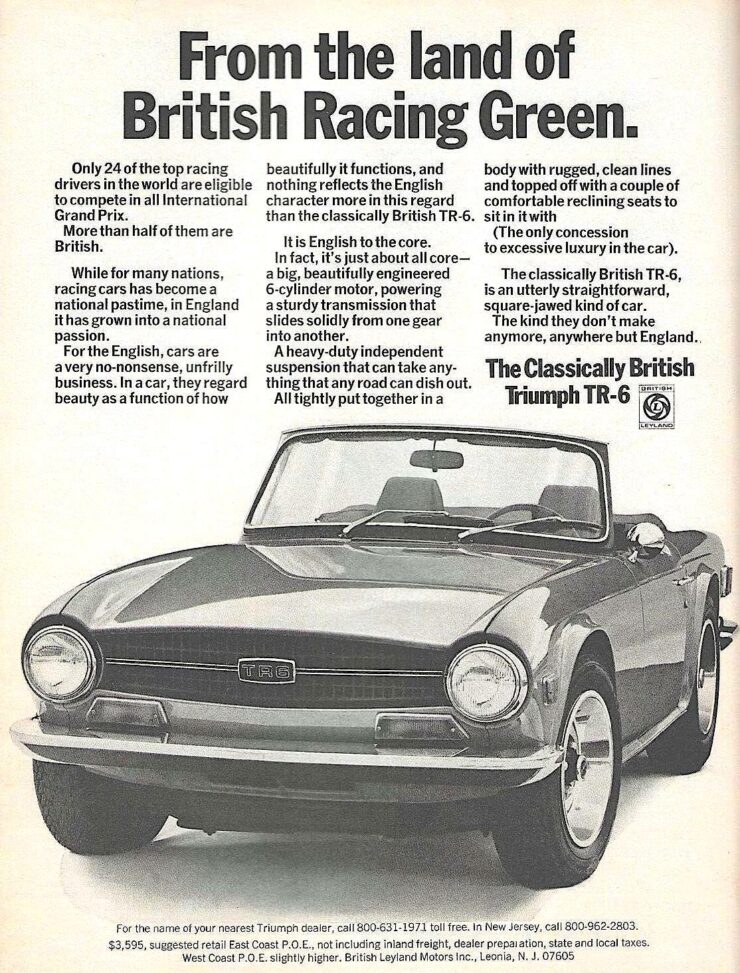

The Triumph TR6 was designed by the renowned German firm, Karmann, and it showcased a balanced blend of traditional British sports car aesthetics and German design. While its squared-off front and back ends were distinctly different from its TR predecessors, it retained the long bonnet and short rear deck, a signature look of Triumph sports cars.
Under the hood, the Triumph TR6 was initially powered by a 2.5 liter inline-six. This engine was capable of producing 150 bhp and was equipped with Lucas mechanical fuel injection, a feature that was notable for its time as most cars were still using carburetors. For the US market, due to stricter emission standards, a carbureted version of the engine was provided which offered considerably reduced power.
One of the car’s striking features was its independent rear suspension, a system that Triumph had been refining since the TR4A. This provided the TR6 with superior handling, setting it apart from many other sports cars of its era, in particular the MGB. Paired with a four-speed manual transmission, and an optional overdrive, driving a TR6 was an experience that won the car many new buyers over the years.
The TR6 had an unmistakably British interior, complete with wooden dashboard, a sports steering wheel, and tactile switchgear. The car was only ever offered as a convertible roadster, no coupe was ever made, though removable hard tops could be bought if required. The car’s combination of a sporting driving experience and a classic British roadster interior captured the essence of what many enthusiasts believe a British sports car should be, and the TR6 remains popular to this day.
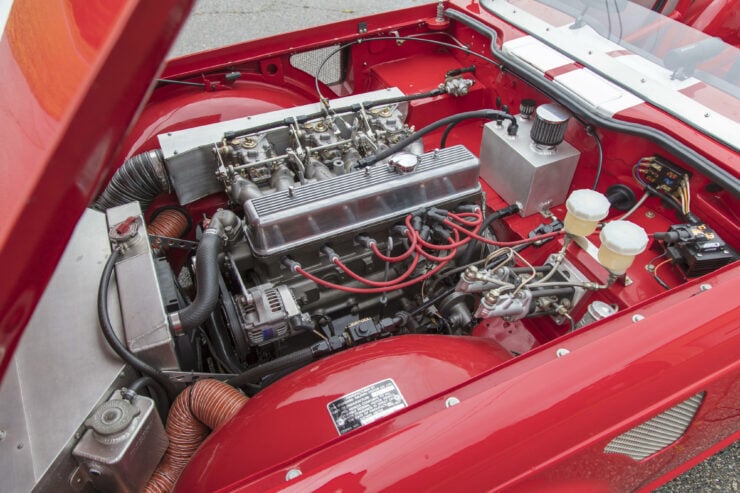

By the time production of the TR6 ceased in 1976, Triumph had manufactured over 94,000 of them. It had become the best-selling model of the TR range, surpassing its predecessors in both volume and popularity.
The TR6’s success has been attributed to its ability to merge the traditional British sports car ethos with modern design (for the era) and engineering, but it’s worth noting that its affordability has played a part in its popularity – due to the high production numbers they remain an approachable classic.
In the years since its production ended, the Triumph TR6 has matured into a much sought-after classic. It remains emblematic of an earlier, analogue time when driving fun was derived from a direct connection between driver, machine, and the asphalt.
The Triumph TR6 Race Car Shown Here
The car you see here benefits from a nut and bolt rebuilt into full race car-specification by the specialists at KTR European Motorsports in Ayer, Massachusetts.
The 2.5 liter straight-six now breathes in through triple Weber side-draught carburetors and a custom fabricated alloy cold air intake. The engine has been significantly improved internally, though this listing doesn’t mention how, just that it now makes 170 bhp at 4,900 rpm, up from the 150 bhp of the original European-specification cars.
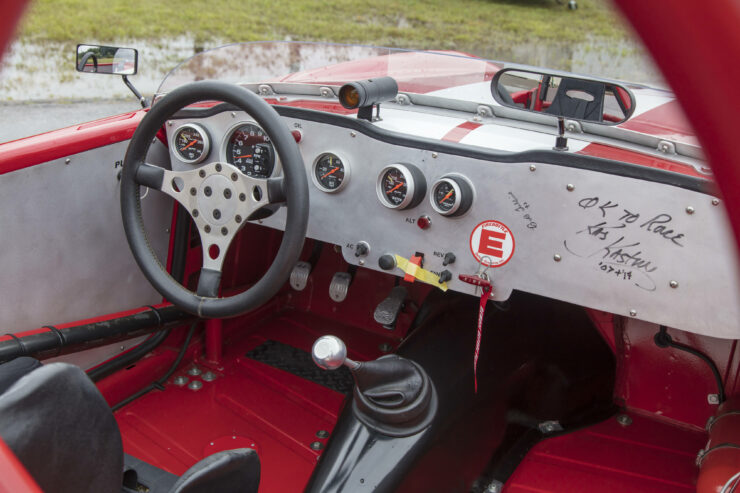

This power is sent back through a 5-speed Tremec manual transmission into a Quaife limited-slip differential to the rear wheels. The car rides on Minilite-style alloy wheels fitted with Hoosier racing tires, and the car has an integrated roll cage, 5-point harnesses, a Fuel Safe racing fuel cell, and on-board fire suppression system.
The TR6 is a famously entertaining car to drive on the limit, so this track-built example should provide the next owner with countless hours of fun – and possibly a few race wins along the way.
It’s now due to roll across the auction block with Bonhams on the 29th of September with a price guide of $20,000- $30,000 USD. If you’d like to read more about it or register to bid you can visit the listing here.

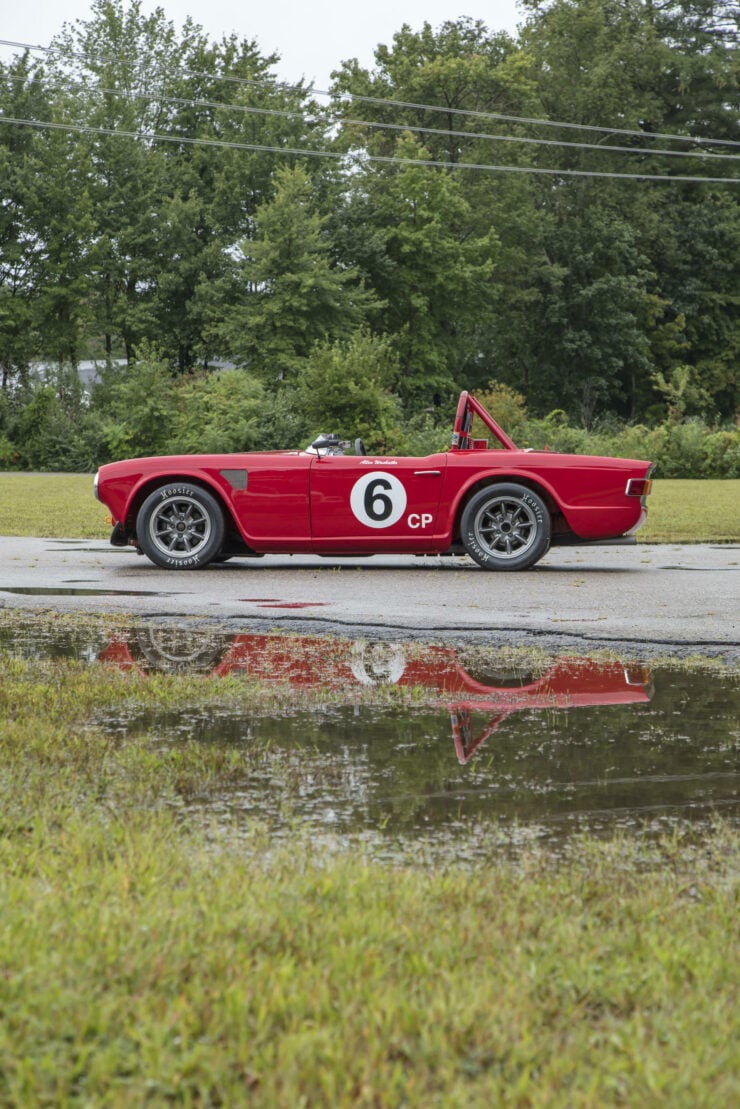
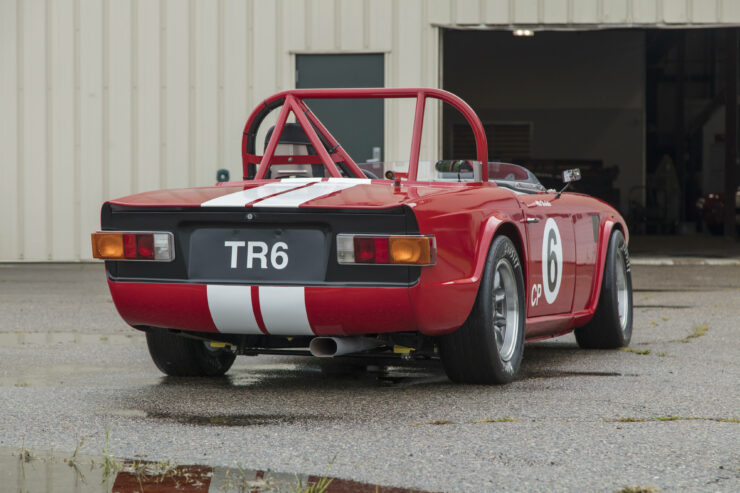
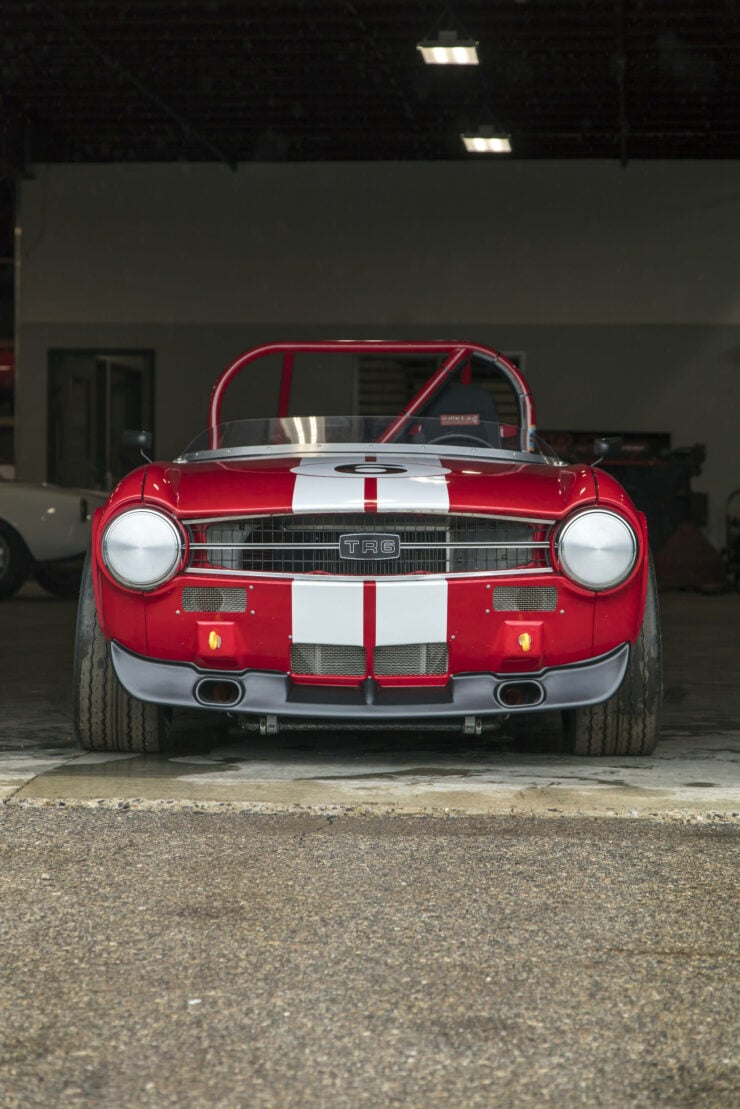
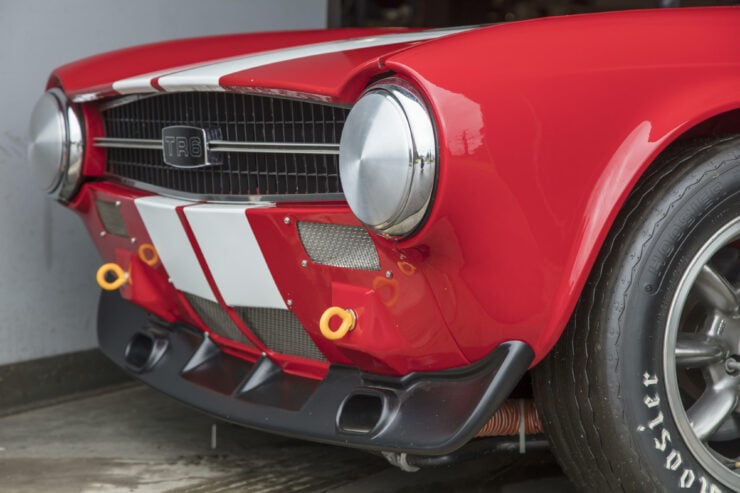
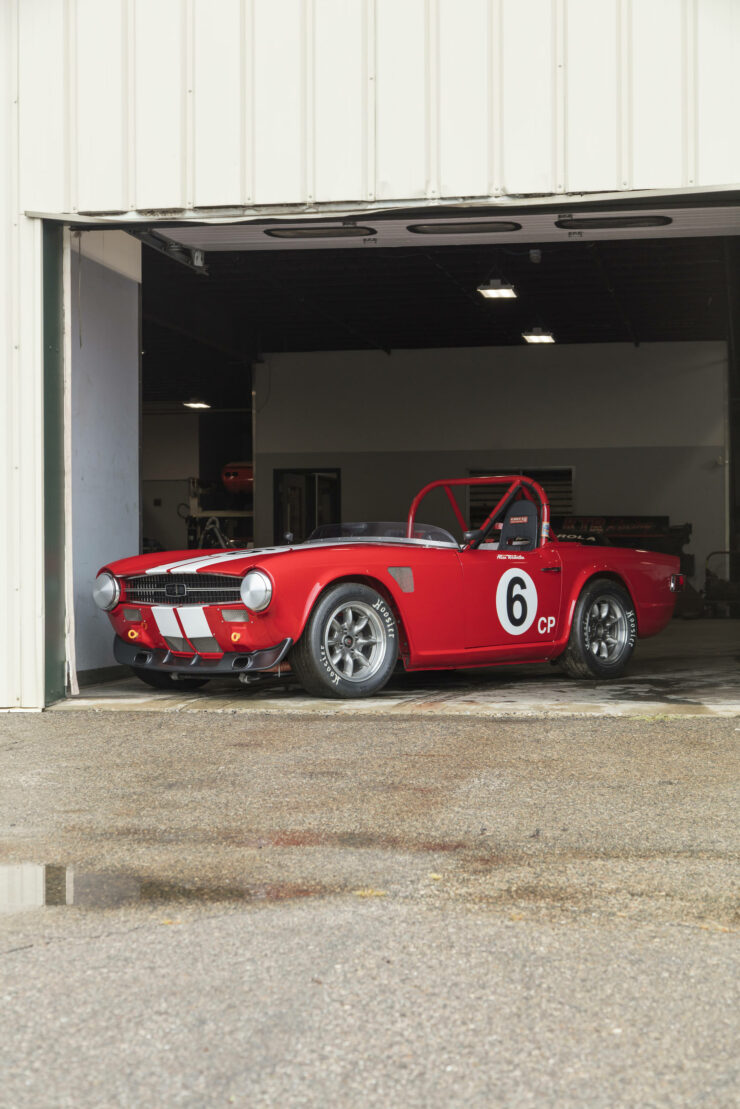
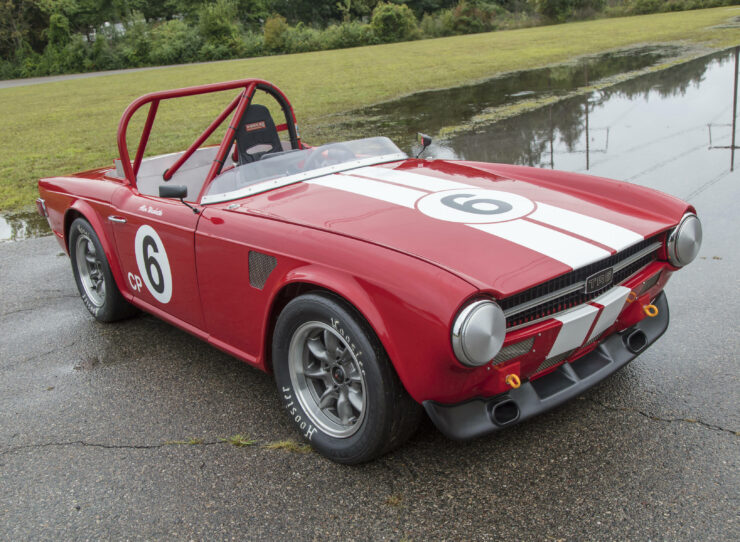
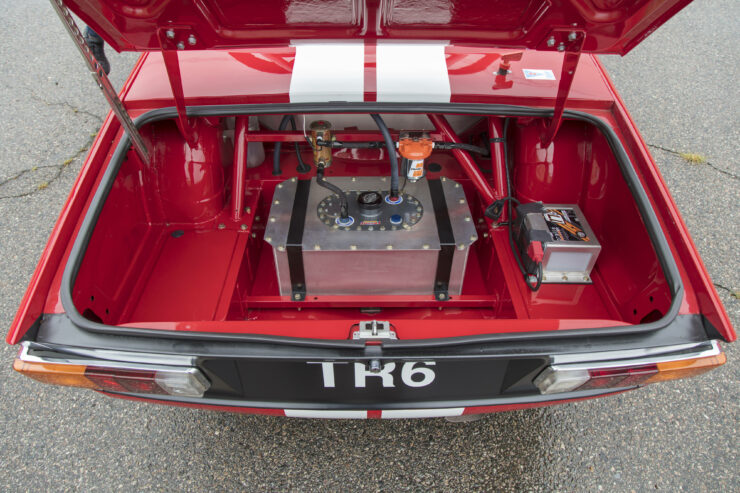
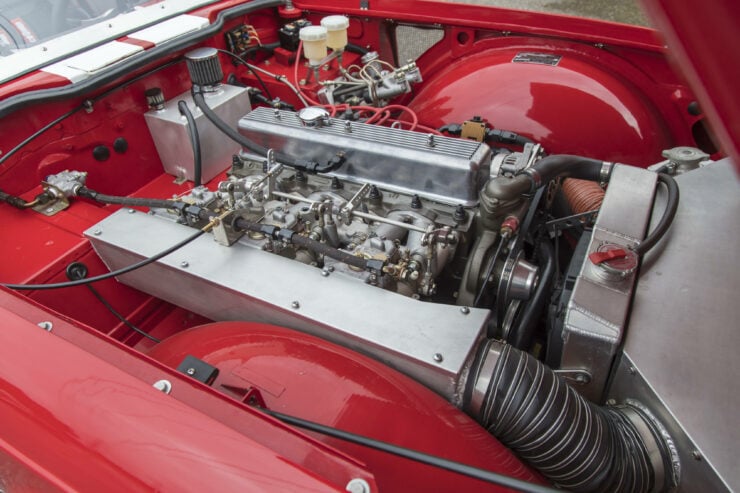
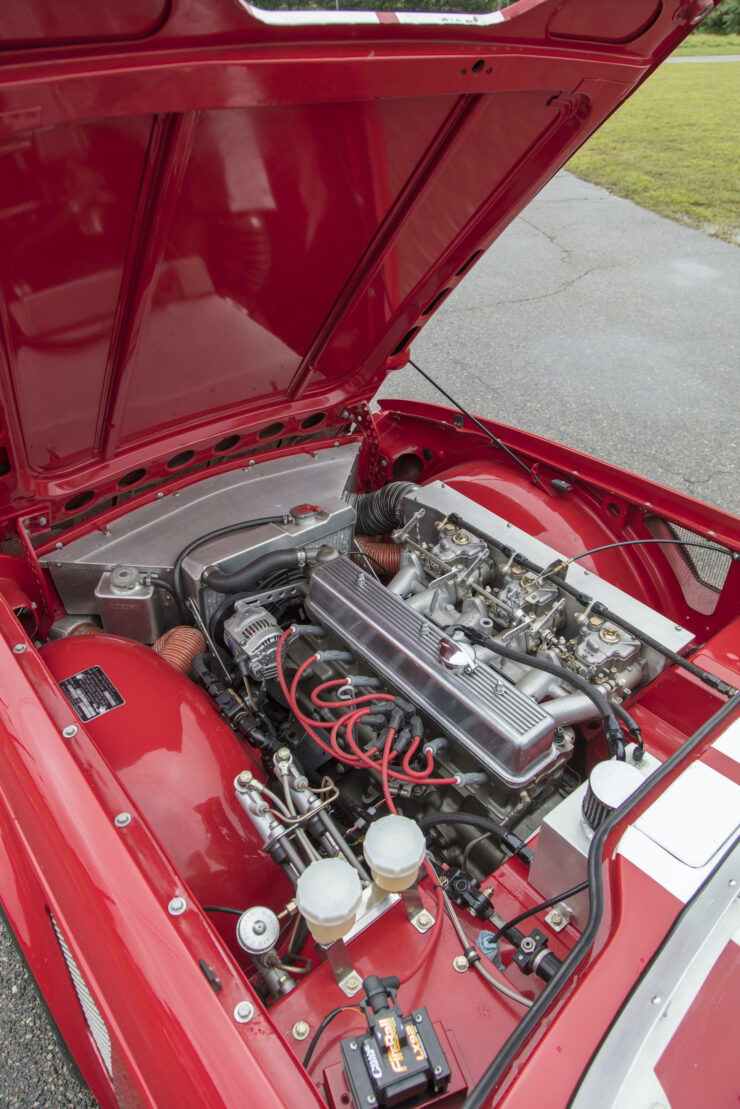
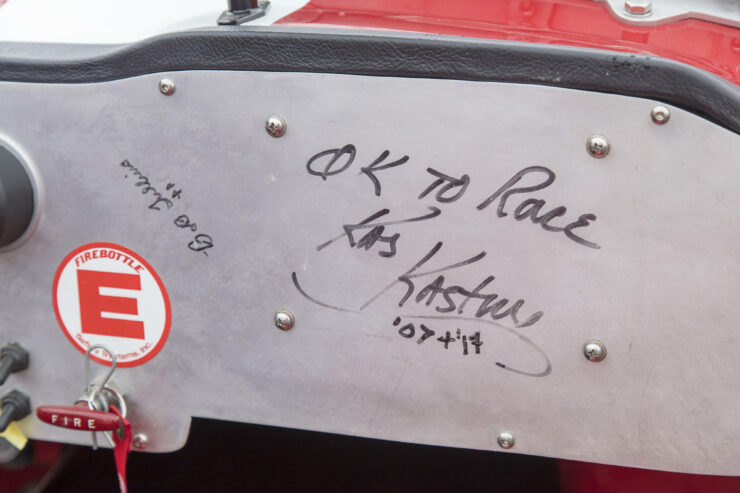
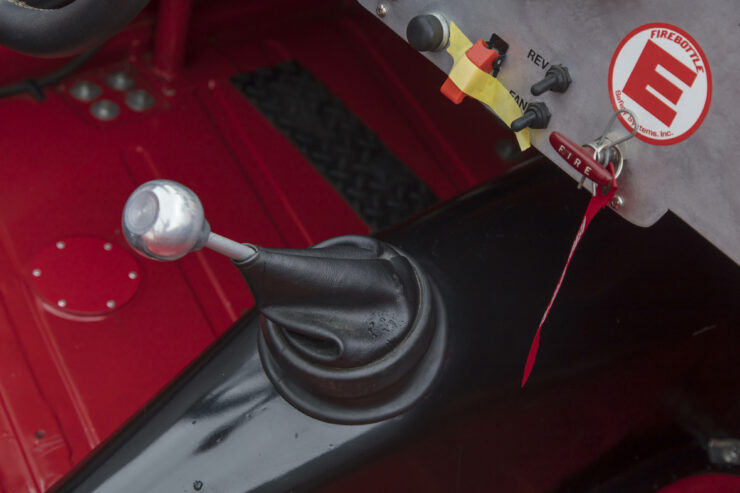
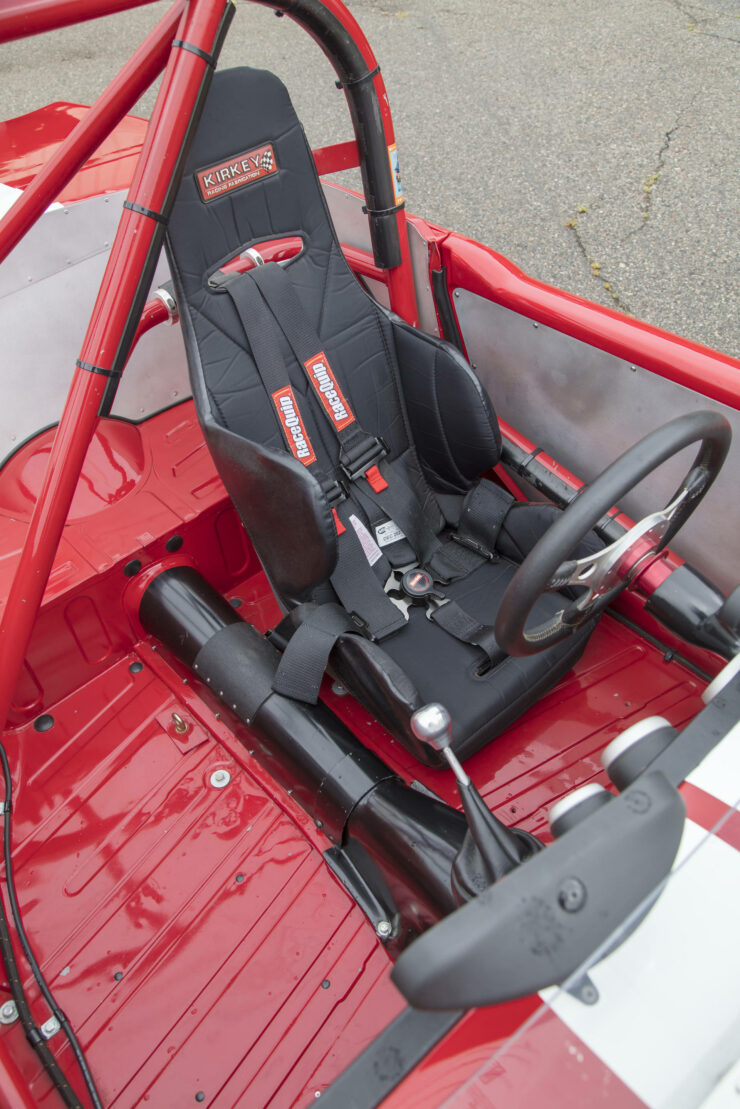
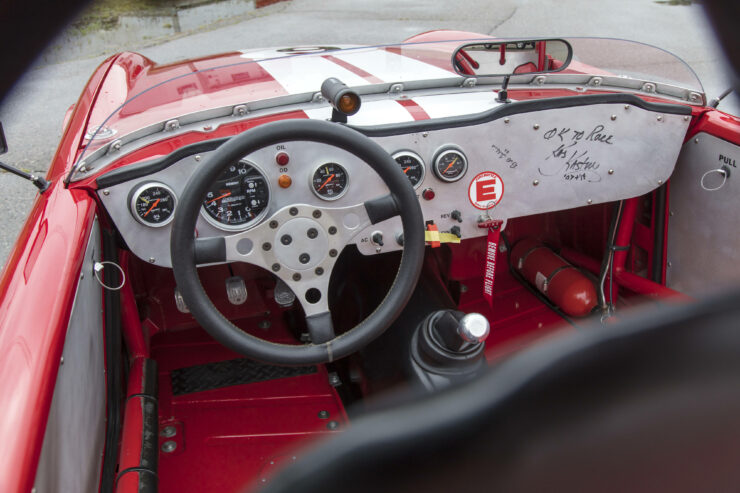
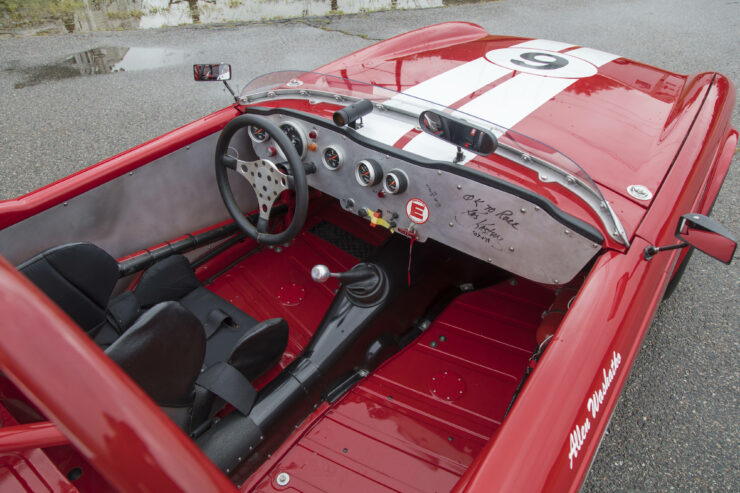
Images courtesy of Bonhams

